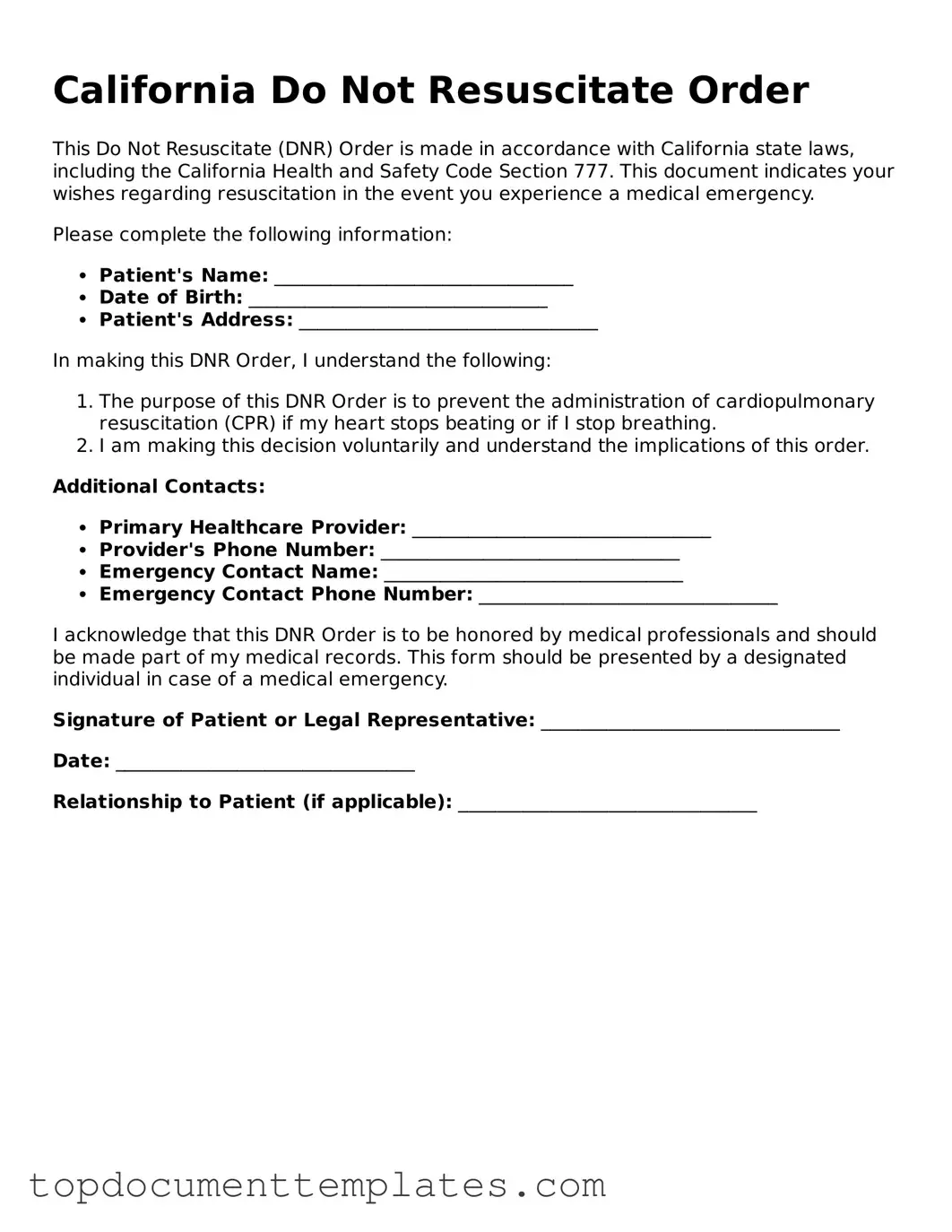Valid Do Not Resuscitate Order Form for California State
A California Do Not Resuscitate (DNR) Order form is a legal document that allows individuals to express their wishes regarding resuscitation efforts in the event of a medical emergency. This form ensures that a person's preferences are respected, particularly in situations where they may be unable to communicate their desires. Understanding and completing this form can provide peace of mind for both individuals and their loved ones.
If you are ready to take this important step, please consider filling out the form by clicking the button below.
Open This Form
